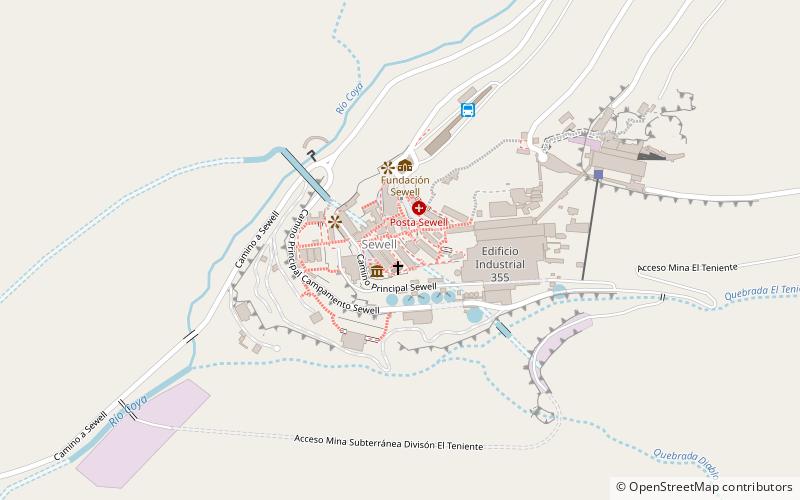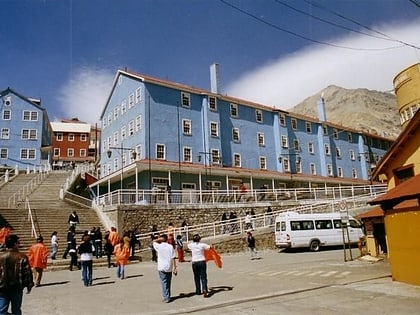Sewell


Facts and practical information
Nestled in the Andes mountains of Chile, Sewell is an abandoned mining town that offers a hauntingly beautiful glimpse into the country's industrial past. Once the largest underground copper mine in the world, the town was established in the early 20th century by the Braden Copper Company to house workers of the El Teniente mine.
Perched at an elevation of over 2,000 meters, Sewell is characterized by its colorful wooden and metal buildings that cling to the steep slopes, accessible only by a serpentine staircase known as the "Staircase of the 48 Turns." This architectural feature not only serves as a physical connector within the town but also as a symbol of the ingenuity employed to overcome the challenging terrain.
The town's historical significance and unique urban design led to its designation as a UNESCO World Heritage site in 2006. Although it was once home to over 15,000 residents, Sewell was largely abandoned in the 1970s when the mining company shifted to a model of transporting workers by road, rendering the remote town unnecessary.
Today, visitors to Sewell can explore the remnants of this once-thriving mining community, including the industrial relics, workers' housing, and the iconic social club. The site stands as a testament to the human capacity to adapt to extreme environments and the transformative impact of industrial activity on both the landscape and society.
